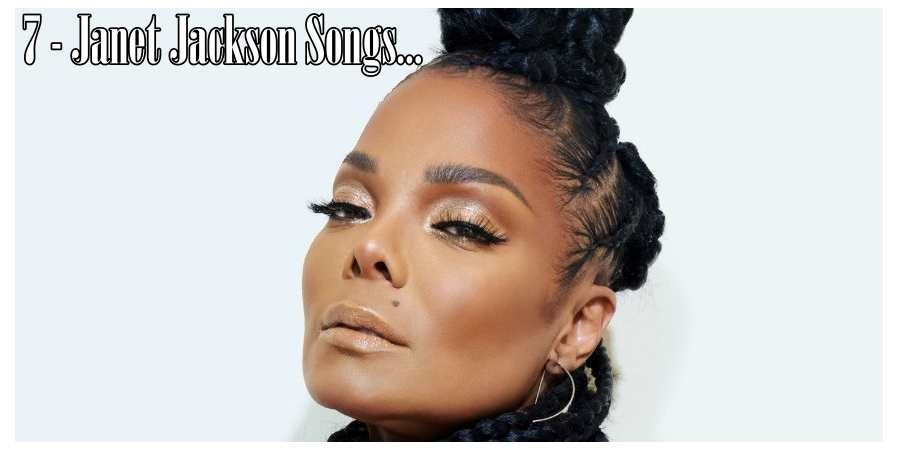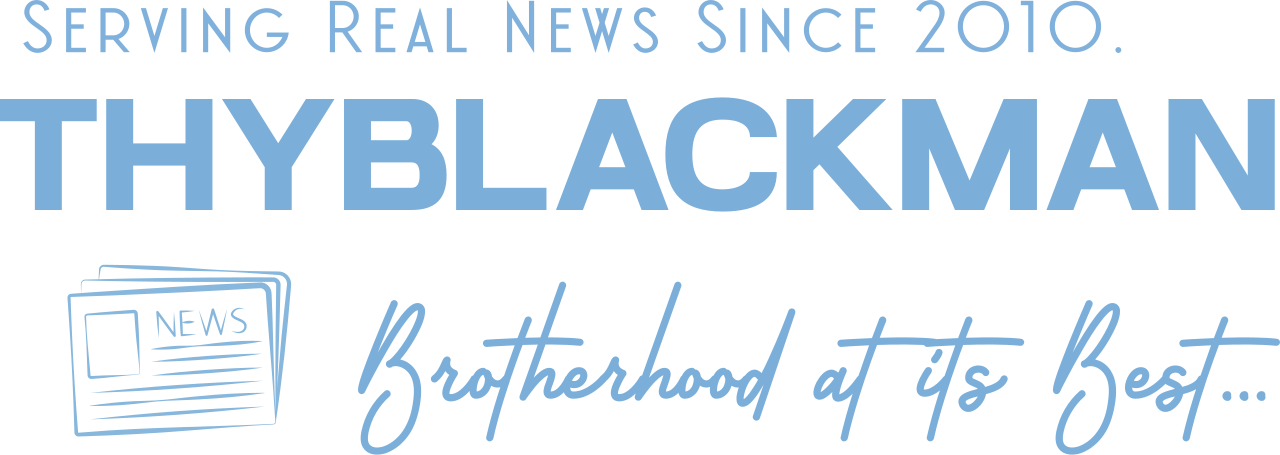(ThyBlackMan.com) When you hear the name Janet Jackson, chances are your mind instantly goes to her iconic hits—tracks that shaped the sound of pop and R&B through the ’80s, ’90s, and early 2000s. Songs like “That’s the Way Love Goes,” “Nasty,” and “All for You” are etched into music history. But if you dig a little deeper into her discography, you’ll find an entirely different world—intimate, experimental, and emotionally rich.
As a lifelong music fan and someone who’s spent countless hours lost in Janet’s albums beyond the radio singles, I can honestly say that some of her most moving and innovative songs are the ones that didn’t top the charts. These aren’t the tracks you hear in commercials or flashback playlists—they’re the ones you stumble upon during a late-night listen and think, How did I miss this?
So, whether you’re a longtime Janet fan or just curious about the layers beneath her legendary status, here are seven lesser-known Janet Jackson songs that truly deserve more love.

1. “Can’t B Good”
“Can’t B Good” is the epitome of Janet’s softer, sultrier side. Hidden deep in her 2008 album Discipline, this track is an ode to the kind of love that sneaks up on you—gentle, warm, and slightly dangerous. Produced by Ne-Yo and D’Mile, it floats on buttery smooth keys and restrained percussion that wrap around her vocals like a silk scarf.
Janet leans into vulnerability here, with whispery, breathy vocals that never strain but still emote. The beauty of the song lies in its simplicity. Unlike her more bombastic tracks, this one doesn’t beg for attention—it quietly seduces. The harmonies are lush but not overwhelming, and the groove is rooted in early-2000s neo-soul with a grown-up R&B vibe. The layered backgrounds echo the quiet doubts and hopes in her head, as if she’s softly thinking out loud.
Lyrically, it’s a confession: “I had a habit of distancin’ myself / And I didn’t know / I was headed for collision.” The song wrestles with the classic theme of love as both healing and threatening. The kind of partner who’s “too good to be true” can often trigger someone to flee, especially when they’re used to heartbreak. Janet expresses that hesitation without melodrama—just honesty and grace.
It’s also a rare production that gives full room for Janet’s ethereal vocals. This isn’t about vocal gymnastics. It’s about mood, sincerity, and emotional texture. Listening to “Can’t B Good” today feels like discovering a hidden note in a box of memories—sweet, aching, and tender. In a post-SZA and Summer Walker world, Janet’s delicate style here feels not only relevant, but prophetic.
2. “Where Are You Now”
While janet. spawned hits like “If” and “That’s the Way Love Goes,” “Where Are You Now” was the understated ballad that quietly anchored the album’s emotional arc. Nestled deep in the tracklist, this song captures a kind of heartache that’s both mature and universal—missing someone who isn’t coming back.
Janet strips back the sonic layers here. There are no flashy synths or dance breaks—just a delicate piano, haunting string arrangements, and her wistful voice asking, “Where are you now, when I need you the most?” The song is drenched in longing, and her delivery is heartbreakingly soft. It’s one of the rare times where Janet sounds fragile, almost broken. Her choice to deliver the verses in almost a whisper amplifies the intimacy, like she’s having this conversation with herself in private.
What sets this track apart from other pop ballads of the era is its emotional authenticity. You can hear the sadness, but also the acceptance. It isn’t bitter or melodramatic. It’s contemplative, even spiritual. The bridge—”Time will pass me by / Maybe I’ll never learn to smile”—feels like a raw admission from someone trying to move on but stuck in emotional limbo. It’s the emotional honesty that resonates, not just the melody.
Production-wise, it was a smart move by Jimmy Jam and Terry Lewis to keep the arrangement minimal. The space between the notes allows listeners to project their own stories into the song. In this way, “Where Are You Now” becomes universal. It could be about a lost love, a friend, even a parent. It’s a ballad not just for breakups, but for grief in all its forms.
Even in 2025, this song still holds weight. It’s perfect for late-night solitude or reflection. In a landscape of overproduced ballads, “Where Are You Now” still whispers the loudest.
3. “Lonely”
Overshadowed by the social justice bangers and massive hits on Rhythm Nation 1814, “Lonely” is one of Janet’s most vulnerable and introspective tracks. It serves as a necessary emotional pause in an otherwise assertive album, offering a window into the quieter side of her psyche.
The song opens with atmospheric synths and a dreamy piano, setting the stage for a deeply personal performance. “You think I’m doing fine,” she sings softly, “but I’m not.” The song slowly builds but never explodes—it hovers, suspended in melancholy. Jimmy Jam and Terry Lewis craft a minimalist production that allows Janet’s voice to take center stage. There’s something haunting about the way the chords sit unresolved, mirroring the emotional uncertainty she’s expressing.
“Lonely” is a masterclass in using subtlety to devastating effect. Her delivery is restrained, never over-sung, but emotionally piercing. She doesn’t scream her pain—she lets it simmer beneath the surface. In fact, this song may be one of the earliest blueprints for what would later be called “sad girl R&B.” Artists like Jhené Aiko and Billie Eilish owe part of their aesthetic lineage to songs like this.
Lyrically, it captures that universal experience of appearing okay to the world while falling apart inside. Janet’s voice is the voice of someone who’s putting on a brave face, but whose heart is unraveling. “There’s a hurt deep inside of me,” she sings, “I don’t know what to do.” It’s deceptively simple, but incredibly effective.
In today’s emotionally complex world, “Lonely” hits harder than ever. It’s not just about feeling isolated—it’s about being unseen. This is a track for anyone who’s ever felt invisible in a crowded room. It’s a rare jewel that shows Janet’s emotional intelligence and quiet power.
4. “Moist”
Often overlooked because of its provocative title, “Moist” from Janet’s Damita Jo album is a sensual, ambient slow-burn that reveals how much Janet has mastered the art of intimacy in music. Co-produced by Babyface, the track is less about shock value and more about creating atmosphere—lush, velvety, and unabashedly grown.
Unlike the more aggressive, rhythmic cuts on Damita Jo, “Moist” takes its time. The production is built on layers of shimmering synths, warm pads, and hypnotic percussion that ebb and flow like waves. Janet’s voice is so soft it almost merges with the track, becoming part of the mood rather than floating above it. Her signature whispery delivery works perfectly here—it’s breathy but never try-hard, seductive without being cartoonish.
Lyrically, the song embraces female pleasure with a confidence that still feels rare in mainstream music. What makes it work is the restraint. Janet doesn’t yell or over-emote—she simply invites you into a world where sensuality is celebrated without shame. “Moist” is atmospheric R&B done right: understated, confident, and layered with adult emotion.
In today’s musical landscape, where artists like SZA and Jhené Aiko dominate the conversation around feminine vulnerability and sensuality, “Moist” feels like it laid the groundwork. It’s not just a bedroom track—it’s a sonic experience, perfect for those who appreciate music that sits in the space between vulnerability and power. If you skipped over it back in 2004, it’s time to go back and listen—with fresh ears and an open mind.
5. “You Ain’t Right”
“You Ain’t Right” kicks off All for You with a jolt of attitude and edge. It’s an explosive breakup track that doesn’t ask for closure—it demands it. With industrial-inspired beats, distorted guitars, and Janet’s layered vocals, it’s one of her most aggressive recordings. There’s a confrontational tone from the jump, as though Janet is peeling off a protective layer and showing us the raw nerve underneath.
The production, courtesy of Rockwilder and Janet herself, is dense and crunchy. There’s a grit to this track that feels more rock than R&B, a welcome curveball from someone often pigeonholed into pop princess territory. The lyrics are fierce and unapologetic—”Lied to me constantly, now I got the strength to leave.” It’s not just the words, but how Janet phrases them—like a punch delivered with velvet gloves. Her vocals are layered with distortion, almost ghost-like, lending an eerie, powerful resonance to the hurt.
What makes the song so powerful is the tension between Janet’s vocal softness and the harshness of the beat. She doesn’t yell or belt—she keeps her voice cool, calculated. The juxtaposition creates an unsettling but addictive energy. It’s like she’s telling you off without breaking a sweat, but you feel the sting anyway. This contradiction between softness and fury is what makes the song uniquely Janet.
In today’s climate—when women’s rage is being reclaimed and celebrated—“You Ain’t Right” sounds more relevant than ever. It’s not just a breakup song; it’s an emancipation anthem. It rejects the gaslighting, the betrayal, the disrespect, and announces its independence with a low growl rather than a shout. On a playlist with artists like Jazmine Sullivan, Tinashe, or even Doja Cat, this would hold its own as an early example of feminine rage done with flair and control.
6. “What’ll I Do”
Another underappreciated gem from the janet. album, “What’ll I Do” is a moody mid-tempo ballad drenched in longing and quiet desperation. It’s one of those tracks that lingers long after the last note fades, not because it’s flashy, but because it’s honest. While the album is known for its sensuality and boldness, “What’ll I Do” is a retreat into vulnerability—a reflective moment of doubt and fear of abandonment.
Musically, the song rides a slick, jazz-inflected groove with subtle guitar work and smooth percussion. The production, courtesy of Jimmy Jam and Terry Lewis, is so tight you could miss just how intricate it is. There’s a lingering, almost wine-glass shimmer to the arrangement—polished but intimate. It bathes you in a melancholy glow, reminiscent of the work of Anita Baker or Sade, yet distinctly Janet in tone and execution.
Janet’s vocals are vulnerable and slightly breathless, as if she’s barely holding it together. “What’ll I do if you don’t come back?” she asks, not dramatically but almost in disbelief. There’s a softness in her delivery that suggests she’s still clinging to the hope of return, even as she braces for heartbreak. The song doesn’t indulge in melodrama—it’s more powerful because it doesn’t.
What’s most striking is how it resists a clear climax. The emotions never explode—they simmer. You keep waiting for the breakdown, the final note of release, but it never arrives. That’s the point. The uncertainty remains unresolved, which makes it all the more real. It’s a brilliant use of musical form to mirror the emotional narrative.
It also holds up incredibly well in 2025. With the resurgence of soulful R&B and artists leaning into emotional transparency, “What’ll I Do” sounds fresher than ever. It’s the kind of track that could sit alongside Giveon, Victoria Monét, or Cleo Sol and not feel out of place. A hidden gem that speaks to the quiet ache of waiting—and the fear of never being chosen again.
7. “Truth”
“Truth” is one of Janet’s most underrated deep cuts—a song that’s quietly devastating. It’s a confessional piece built on little more than a piano, minimal percussion, and layers of soft harmonies. Here, Janet is not a superstar. She’s not a Jackson. She’s a woman trying to understand a collapsing relationship. There’s no production gloss here to hide behind—just raw words and emotion.
The lyrics are brutally honest. She talks about pretending to be okay, about hiding tears, about watching someone she loves walk away while feeling helpless. The chorus is a plea: “Just tell me the truth, it hurts to know.” It’s the kind of song that bypasses the brain and hits you straight in the heart. And unlike the grand heartbreak ballads that flood pop music, this one is told in a whisper, not a scream. That whisper hits harder.
Janet’s performance here is restrained but soulful. She doesn’t oversing or dramatize. Instead, she lets silence do a lot of the talking. You can hear the spaces between the words, the hesitation, the fear. It’s minimalism at its most powerful. The tremble in her voice as she says “Don’t lie to me…” feels like an open wound being pressed gently. She’s not angry—she’s exhausted. And somehow that’s even more crushing.
The production deserves special mention. The piano feels distant, like it’s being played from another room. The drumbeat is barely there—more heartbeat than rhythm. This bare-bones approach allows the song’s sentiment to feel all the more intrusive. It’s like reading a page from someone’s diary you weren’t supposed to see.
In a world where oversharing is the norm but real emotional vulnerability is rare, “Truth” feels essential. It’s one of Janet’s most human moments, and that’s saying something. It’s a masterclass in restraint, emotional resonance, and lyrical intimacy. If you’ve ever needed a song to cry to, this is it. It’s raw, relatable, and painfully beautiful.
Janet Jackson has always been more than just her hits. These songs—quietly tucked away on albums, bonus tracks, or never officially released—prove that she’s an artist who has never been afraid to show vulnerability, take creative risks, and speak from the heart.
Listening to these hidden gems today feels like discovering a whole new side of her catalog. They show us a Janet who whispers instead of shouts, who experiments without apology, and who connects on a deeply human level. These tracks might not have dominated the airwaves, but they leave a lasting impression all the same.
If you’ve never heard these songs before, consider this your invitation to explore them. And if you already know and love them, then you know exactly what makes them special. Either way, one thing’s for sure: Janet Jackson still has a lot to say—and sometimes her quietest songs speak the loudest.
Staff Writer; Jamar Jackson

















Leave a Reply